
In The Weekly Review is an Operating System, I detailed the process I go through each week to capture any new open loops, clear my workspaces, and nail down the events and commitments for the week.
In this article, I’d like to do the same for my Monthly Review (MR).
Because the MR touches on deeper patterns in how I work and live, this article is going to be longer than the previous one. Here’s a quick table of contents:
- Tiago’s Monthly Review: how I do it
- Focus as structural integrity: how it produces focus
- My learnings: what I’ve learned from doing it
- Accumulating change: how it influences personal growth
The Monthly Review is a timeout from the continuous stream of weeks flashing by; an oasis of calm to evaluate your priorities, values, and progress on a longer-term horizon.
It is an absolutely critical practice for aligning the smallest actions all the way through projects, goals, mission, and life purpose.
The 6 Horizons of Focus, with examples
Allen provides the following example:
A key driver for your life may be to assist others in achieving their dreams (purpose), which you will express by becoming a world-class athlete and spokesperson (vision), for which you will achieve a starting line-up position on a national team (goal). To do all this you need to maintain a rigorous training program (area of focus). You realize you want to get a new personal trainer (project), for which you need to call your college coach (next action) to get his recommendation.
But this can be a difficult practice to do consistently: it feels necessary given the pace of change in our lives, but doesn’t seem to happen often enough to really become a skill. Sitting down to think on such a grand scale takes our very best thinking, yet often the next actions that come out of it seem unrealistic.
My answer to this problem, as with so many things, is to make it into a process. And then get creative at improving it over time.
My Monthly Review is similar to my Weekly Review in that it happens at regular intervals, follows a checklist format, and connects to both my actionable and reference systems.
At the same time, it’s quite different.
What allows my Weekly Review to be mostly tactical is that my Monthly Review is mostly strategic. What allows the WR to be fast and responsive, is that the MR is slower and more time-consuming. What allows the WR to zero in on just the next week, is that I know I can depend on the MR for monthly course correction.
They are symbiotic. If I start to fall off one, the other starts to fail soon after as it tries to take on both jobs. Specialization is for insects, but also for checklists.
The model I use for my Monthly Review is a “systems check.” It is a regularly scheduled inspection and maintenance to make sure all my systems are working seamlessly together.
You wouldn’t deep clean your engine every 500 miles, because you know it’s scheduled for 10,000 miles. You’re able to rely on your plumbing day in and day out, because every 10 years there’s a comprehensive inspection.
The following is my own version, and it is one of the most profoundly impactful habits I know of to make sure I’m not just getting things done, but the right things done.
CLICK HERE FOR AN EVERNOTE TEMPLATE OF THIS CHECKLIST YOU CAN COPY AND MODIFY FOR YOUR OWN USAGE
TIAGO’S MONTHLY REVIEW
PART I: PERSPECTIVE
The purpose of Part I is to zoom out to the big picture, to a view you’re not used to seeing on an everyday basis.
☐ 1. REVIEW AND UPDATE LIFE GOALS
I’ve kept a list of life goals since 2004, the first time I came across a goal-setting exercise. I follow the well-known S.M.A.R.T. framework, as summarized here. It advises writing goals that are Specific, Measurable, Achievable, Results-focused, and Time-bound.
What many people don’t get is that the value of goals is not in the future they describe, but in the change in perception they foster. They serve as a forcing function, helping you steer toward sources of information and opportunities that bring you closer to what is truly important to you.
This is why it’s a good idea to be as specific as possible when formulating goals. Painting a vivid picture with juicy details may be less likely to come true precisely, but it helps you filter for the opportunities that will take you somewhere in the ballpark.
Here’s what “reviewing goals” entails for me:
1A. Cross out and move completed goals to “Completed” heading
I’ve seen a lot of people just delete goals they’ve accomplished from their list. This is completely crazy, like resetting the scoreboard every time you score a home run.
When I complete a goal, I add a strikethrough and move it to a “Completed Goals” heading at the top of the document (a note in Evernote). That way, every time I review this note, I get to scroll through all the 72 goals I’ve already achieved, putting me in a fantastic state of mind by the time I get to the 41 I haven’t.
1B. Update timelines for existing goals
I always put an exact deadline on every goal, to the day, even if it’s years away. The purpose of this is not to predict the future or be overly prescriptive. It is to make sure there is a clear trigger for reevaluating stalled projects or killing zombie projects that have staggered along for too long. These dates provide that trigger.
This step mostly involves pushing out overly ambitious deadlines I’ve set. I have no guilt or disappointment associated with this, because I am also adding in new goals I’ve achieved without ever really trying to set them. What I want is to be consistently producing valuable results, not sticking blindly to the plan at all costs.
I also often find that I’ve reached a goal much earlier than expected, often in a surprising or unexpected way. This is why I strongly advise writing goals as “end states” (“I have an online presence attracting X unique visitors and X conversions per month”) that can potentially be reached many ways, rather than “means” to those ends (“Launch WordPress site”) that can only be fulfilled one way.
Lastly, I reorganize the whole list under three different headings, to focus my attention on the nearer term ones:
- Short-term: 1–2 years
- Medium-term: 3–5 years
- Long-term: 5+ years
1C. Update wording/definition of goals
Goals often change as I pursue them, as new information comes to light or I get more clear on what matters to me.
I have absolutely no problem tweaking, refining, redirecting, or scaling goals up or down to fit my new direction. Scoring goals consistently is so important, it is worth moving the goalposts.
If you follow the very small definition of projects from GTD, and tie every project to a desired outcome/goal like I advise in P.A.R.A. Part I, you’ll end up with quite a rapid pace of goal completion anyway, which is very motivating.
Example: “Plan a 30-day promo campaign for new round of Building a Second Brain v4” became “Establish an evergreen online sales funnel, leading followers on a journey through my content and products, by Dec. 31, 2017” when I realized I didn’t want to be doing sales pushes forever, that online courses are my long-term focus, and learned what an “evergreen” funnel was. As you can see, there is still ambiguity around this “journey” and this will need to be continually refined over time.
1D. Add new goals
At this point I add any new goals to the list, if I’ve decided a new outcome is worth pursuing. I can also add corresponding projects to my task manager, if it’s something I want to start taking action on immediately.
☐ 2. REVIEW AND UPDATE PROJECT LIST
Step 2 is to update your Project List, your comprehensive dashboard of active commitments. Doing this right after reviewing your goals has a powerful effect, allowing you to see the landscape you’re running across from a bird’s-eye perspective, instead of a prairie dog’s. I start by updating the list of projects in my task manager, and only then replicate the list verbatim across the other platforms.
2B. Archive any completed or inactive projects
If you define your projects tightly, you’ll always have a few of them completed each month. This is the time to clean them up, deleting any lingering tasks you don’t intend to complete, archiving the project, and potentially moving any project support materials to other notebooks (as described in detail in the P.A.R.A. Ops Manual).
This project is finished, so I drag it from my “1 Projects” stack to my “4 Archives” stack (after moving any potentially useful notes to other notebooks)
2C. Update outcome/goal for each project
The goal or desired outcome for each project is like a target or a destination. You want to keep it front and center in your vision, in this case literally: I advise pasting the goal directly from your goal list somewhere you’ll see it day to day: the “notes” section right under the project name in Things, or as a section header in Todoist.
2D. Order projects by global priority
Next, I “pre-prioritize” my Project List. I’ve noticed that many people don’t prioritize their project portfolio much at all, and instead micro-manage the priorities of individual tasks. This would be like pinching every penny, while neglecting to make a monthly budget.
Instead of trying to decide the priority of each incoming task reactively, I proactively designate a “global priority” for the project as a whole, and rearrange them in my task manager from most to least important. Deciding on an overall theme or focus for the week in advance makes all the smaller decisions during the week much easier.
2E. Replicate updated Project List across Evernote, Finder/Dropbox, Google Drive
Your Project List is not only the dashboard for your actionable tools; it is also the bridge between your actionable and reference (or project support) tools.
Now that you’ve taken the time to make this list totally clear, current, and complete, take an extra minute to replicate the same projects across the other platforms you use. This will ensure you can switch seamlessly between them, and find files when you need them.
☐ 3. REVIEW AND UPDATE AREAS OF RESPONSIBILITY
Areas of Responsibility, in case you forgot, is “a sphere of activity with a standard to be maintained over time.” For example: Health; Finances, Professional development; Travel; Friends; Apartment; or Product Development.
3A. Evaluate areas and capture any new tasks, projects, habits, routines, or decisions needed
Although Areas tend to change more slowly than Projects, and hardly ever end, they do still need to be reviewed from time to time. I find monthly is the perfect cadence. “Re-evaluating my personal development” is not something I’m going to do weekly.
Although I don’t specify exactly what the standard is that I’m committed to in each area, I can always intuitively say whether I’m meeting it or not. I’m looking for either a general feeling of satisfaction, or a vague unease that tells me something is not right in that area.
If I decide action is needed in an area, I can capture any new open loops (Apartment area => research house cleaning options), or create a new project (Travel => Mexico trip). I can also plan new habits or routines (Finances => check budgets weekly).
3B. Replicate list of areas across Evernote, Finder/Dropbox, Google Drive
Just as with projects, you want to be able to switch seamlessly between your different platforms. If anything’s changed with your Areas, replicate them verbatim across your primary platforms.
☐ 4. REVIEW PERSONAL NARRATIVE VISION
This is an exercise I started about 4 years ago, after reading the book Made to Stick. I understood then that stories are the fundamental currency of human attention and meaning, and that it might be useful to start trying to tell my own.
I don’t make it a grandiose, life-spanning thing. At the end of every year, I sit down and ask myself “If my life could be as fantastically spectacular as I could possibly imagine a year from now, what would a typical day look like?”
I start with my idealized daily routine, go on to cover what’s going on with the main areas of my life, recount what I’ve already achieved by that point, and “try on” different imaginary scenarios to see how they feel. The goal is to get more in touch with what I want and what matters to me.
Although I only write this narrative once a year, I like to review it more or less monthly. The perfect time to do it is just after getting my Projects and Areas updated and in order, because I can compare exactly what I have with what I want.
I’ll bold the parts that could be addressed with new projects, and highlight the parts that fit more into Areas. It’s a great feeling to see many of those bolded and highlighted sections disappear over the course of the year, as (some of) my dreams turn into reality.
One paragraph in my current Personal Narrative Vision 2017
PART II: HOUSEKEEPING
Part II contains a few “housekeeping” tasks, to perform deferred maintenance that will eventually cause problems if left unchecked for too long.
☐ 5. REVIEW SOMEDAY/MAYBE ITEMS
The whole purpose of this category, as explained by GTD, is to be able to capture open loops that are spinning around your brain, but not necessarily commit to doing them immediately. It gives you the space to play with a wide diversity of possibilities, while focusing your attention on the ones that are “next.”
But this only works if you take the time to periodically go over your Someday/Maybe items, to see if there’s anything you want to “promote” to a full-fledged next action or project. I’m often amazed and sometimes confused at the ideas my past self had about what might be interesting to explore.
Don’t take this lightly. It may seem frivolous, but I’ve found that skipping or skimping on this item makes me not trust putting things into someday/maybe in the first place, causing my actionable lists to fill up with questionable tasks. My mind can only let go if it trusts that I will get to it at the end of the month.
☐ 6. REPRIORITIZE TASKS
From the higher horizon of my long-term goals, projects, and areas, now is the time to review my tasks and re-prioritize them, which mostly involves bringing them down a notch or two in priority, with many of them ending up as someday/maybe items. I often find that what seemed urgent and important in the moment, isn’t at all.
I know earlier I said to not prioritize individual tasks. I think it’s a waste of time during the rapidly changing workweek, but when done in a big batch, from this longer-term perspective, it can actually really help clear the decks.
Such a “mass reprioritization” accounts for what I call “priority drift.”
Over the course of weeks and months, I find that the tasks in my task manager gradually percolate toward higher and higher levels of priority, with no regard for the actual priorities in my life.
There is a mechanism for escalating priorities, and I use it frequently, but not one for de-escalating them. High-priority tasks somehow get an “ultra-high-priority” rating, then “ULTRA-ultra-high-priority!!!”, and so on. If this keeps going eventually I will abandon my task manager altogether, like a sinking ship.
☐ 7. EXTRACT HIGHLIGHTS FROM FINISHED EBOOKS
I take the time to extract my Kindle highlights using Bookcision, and import them into Evernote, my note-taking program. Many of the books I read don’t seem to have an obvious application to current projects, but I capture them knowing that I can periodically resurface my notes to spark ideas or make new connections.
My online bootcamp Building a Second Brain teaches how to build and maintain such a system of “personal knowledge management.”
☐ 8. EMPTY TRASH IN TASK MANAGER AND EVERNOTE
I occasionally have a need to retrieve things I’ve deleted in these two programs, so I don’t like emptying the trash too often. But on a monthly basis, it’s very satisfying to permanently delete the numerous files I’ve decided are no longer needed.
FOCUS AS STRUCTURAL INTEGRITY
The kind of alignment I’ve referenced throughout this article is not something that happens automatically.
This article on the review practices of Facebook VP of Product Fidji Simo sheds some light on how high performers use the different horizons to maintain their focus on what matters.
Here’s the key takeaway:
Instead of thinking of it as a quality or skill you bring to bear on something, consider focus to be the force you exert to stay in line with your intentions.
Bingo.
Oftentimes we think of focus as some sort of energy beam we project through our eyes. A constant and unwavering field of pure mindfulness we have to maintain at all times. This is exhausting, because our minds are not designed for perpetual focus.
Think instead of a master builder checking the structural integrity of a house. He’s careful, curious, reflective. He’s looking for cracks, for drips, for subtle patterns indicating something deeper is misaligned.
He knows the house can withstand tremendous amounts of force. Earthquakes and hurricanes even. But one little misalignment and over time, a crack will widen straight through the foundation.
There’s a close parallel to our own lives. The cracks in our integrity — not just in productivity but in health, finances, spirituality, relationships, family, routines, sleep — creep up on us slowly. We don’t immediately feel the consequences when these things are out of alignment. But over time, they determine the quality of our life and work far more than any project or goal.
This is exactly why having a formal Monthly Review is so important. Pushing back on the inertia of life takes real resolve. It has consequences. There will be tradeoffs.
You’re not going to see these adjustments through if it just occurred to you randomly one day on the subway “I should really eat better.” You want to make that decision sitting quietly, with your full list of commitments arrayed in front of you, and your systems ready to spring into action.
MY LEARNINGS
More and more, I believe operating with integrity (structural, not just moral) is the skill that separates truly breakout performers from everyone else. It’s challenging because it doesn’t look like productivity on the surface. Fewer boxes get checked and TPS reports delivered.
But this reflection is one of the absolutely most powerful things I do. Let me give you a few examples of the changes I’ve made out of my recent Monthly Reviews.
1. MORE ATTENTION ON THE HIGHER HORIZONS
I typically prefer staying tactical and close to the ground most of the time. And generally that is something I’m proud of, being action-oriented. But sometimes I can be too action-oriented, and forget the bigger picture.
Recently I was talking to a close collaborator, and realized I had never told him the big picture of the project we were working on together. Once he heard it, he said it “changed everything.” The higher horizons can inspire a deep sense of purpose in myself and others.
I’ve also seen this in my goals. I have a whole cluster of goals targeted for completion around this time in my life, age 32. I think that’s because when I first started the list around 22, I couldn’t imagine more than 10 years into the future.
Instead of getting depressed that I’ve only completed some of them, I chose to interpret this as a signal that more ambition is needed. It’s time, perhaps in my Annual Review next month, to think much, much bigger about where I want my life and my work to go.
2. NEED TO LEVERAGE THE EFFORTS OF OTHERS
I also saw this throughout my list, even in such mundane things as importing my Kindle highlights in step 7. I can see clearly that my To Read list is growing exponentially faster, while my rate of reading is slowing down. If I want any chance of getting exposure to the ideas contained in those books and articles, I’m going to need to find ways to leverage others’ efforts in reading and summarizing.
Another example is seeing how many tiny little tasks I’m tracking in my task manager, numbering in the hundreds (in step 5). Many of these were captured at a time where I was responsible for every single little thing, but now I need to develop the skill of outsourcing entire projects or areas of responsibility, not just one task at a time (this triggers new projects, like “Hire personal assistant”).
3. AREAS BUILD THE CAPACITY REQUIRED TO EXECUTE PROJECTS
I’ve always known this conceptually, but it’s really hit home in the last few months. I’m taking on projects at much higher scale and complexity than before, and am finding the structural integrity of my life, in areas such as Health and Finances especially, can’t take the load. Like adding floors to a single-story home, eventually I’ll need to reinforce the foundation and frame.
This is, by the way, how growth happens. You make commitments and promises that you don’t know how you can keep, but are nonetheless totally committed to keeping. We humans don’t have reserves of willpower to build capacity before it’s needed. We need the added weight to be able to then justify building it.
These are just a few examples of the kinds of learnings I take out of my Monthly Review. They aren’t clear next actions, but inspire whole new waves of change that cascade across my actionable and reference systems, my professional and personal life, my internal experience and my relationships.
ACCUMULATING CHANGE
There’s a final thing I’ve learned over the many months I’ve used this Monthly Review, that speaks to the connection between productivity, behavior change, and personal growth.
I invest a huge amount of time and energy into “transformational” personal growth experiences. Burning Man, Landmark, Vipassana, coaching. My intuition tells me these experiences have changed me on a deep level. But when and how?
It’s not like I woke up the next morning a completely different person. I had to continue working, integrating, and absorbing over time. The event was a pivotal change in direction, but had to be followed by movement.
I believe there are levels of behavior change, like marine habitats at different depths:
The shallow ones are the ones you can see plainly on the surface. There’s an oil spill and you see it spreading across the epipelagic zone. But there are also deeper ones, where things move more slowly but can have more far-reaching impacts. If the Earth’s core started heating up, for example, it might take a lot of time to slowly heat each zone up from the bottom, before getting to the atmosphere. But once it did, the effects would be catastrophic.
I think humans are like this too. Something deep inside shifts, a core belief or an interpretation as to how the world works. It’s a seismic shift, but within a few days your life seems to return to normal. You might conclude “nothing really changed.” You might chalk it up to the “high” of the moment.
But something has indeed changed. If you watch carefully you’ll notice. That food you’ve used as a coping mechanism suddenly tastes foul in your mouth. That person that always triggers you is suddenly worthy of compassion. The charge of a past memory is now just a little pinprick.
Add up these changes, and you have transformational change. Update enough beliefs, and you have a new identity. Be patient, because once they all reach the surface, your whole world will catch fire.
What does all this have to do with something as mundane as a Monthly Review checklist?
It is during my MR that I most often notice these changes. Obsessed with goals and progress from week to week, it is easy to miss what has progressed. Obsessed with the gap between what I have and what I want, it is easy to fill my view with what’s missing, and miss what I already have.
The Monthly Review is a meeting between my past, present, and future selves, to acknowledge not only where I’m going, but where I’ve been. Because the only way to change the future is to honor the past.
What I’m talking about here is the deepest version of the “motivation-hacking” I described in Mood as Extrapolation Engine. Highlighting as you read gives you motivation at the surface layers. Working with small packets is a few meters deep. But near the ocean floor there is a possibility.
The possibility that you are the author of your own life. That you decide what goes down. A simple checklist can provide the opportunity to map your own evolution. A couple hours per month is a small price to pay to write your own destiny.
The Only Subscription
You Need to
Stay at the
Edge of AI
The essential toolkit for those shaping the future
"This might be the best value you
can get from an AI subscription."
- Jay S.
Join 100,000+ leaders, builders, and innovators

Email address
Already have an account? Sign in
What is included in a subscription?
Daily insights from AI pioneers + early access to powerful AI tools
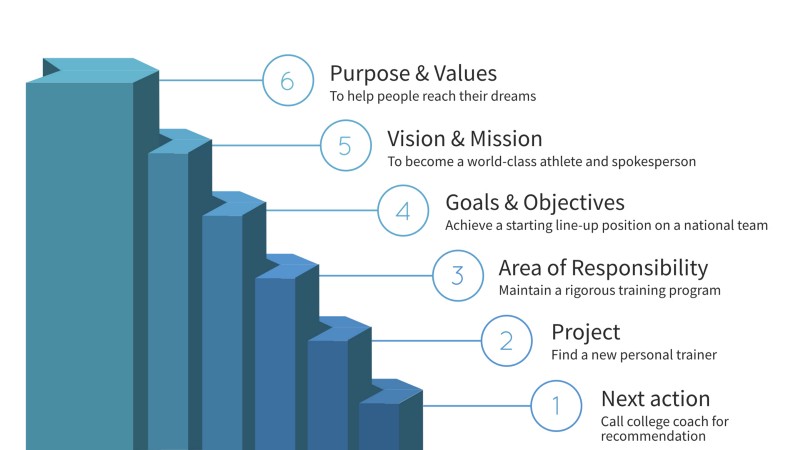
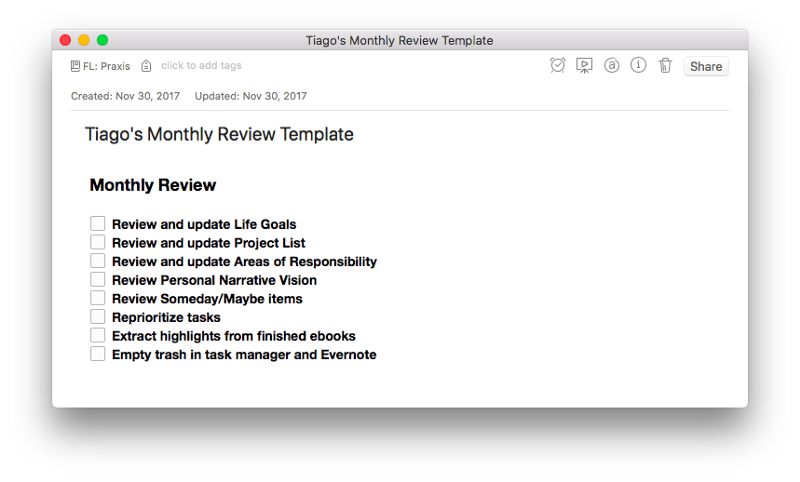
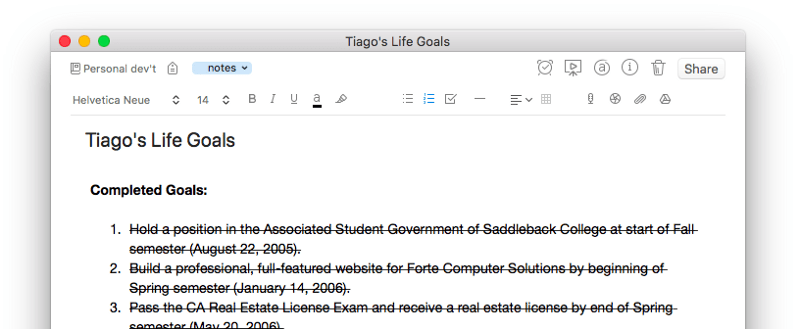
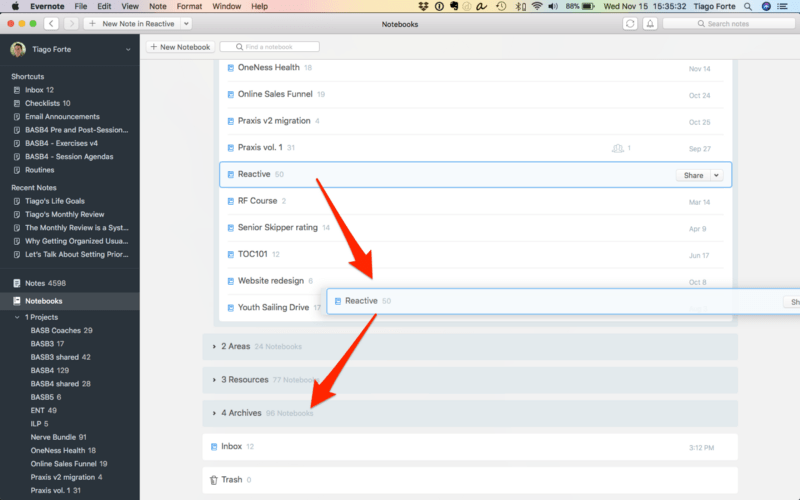

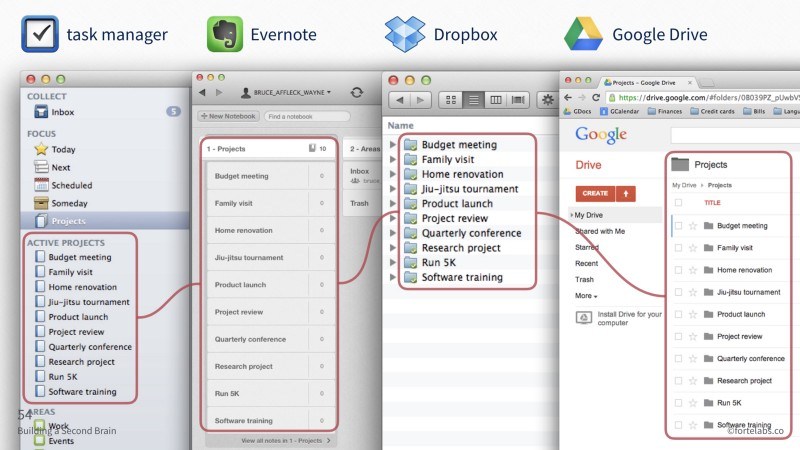

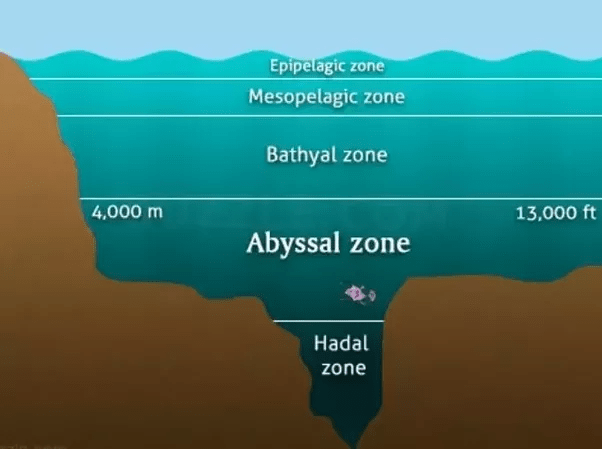







Comments
Don't have an account? Sign up!